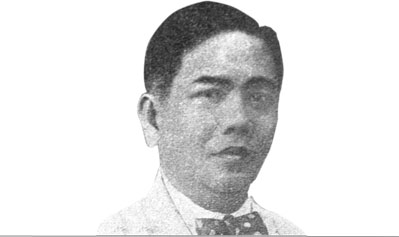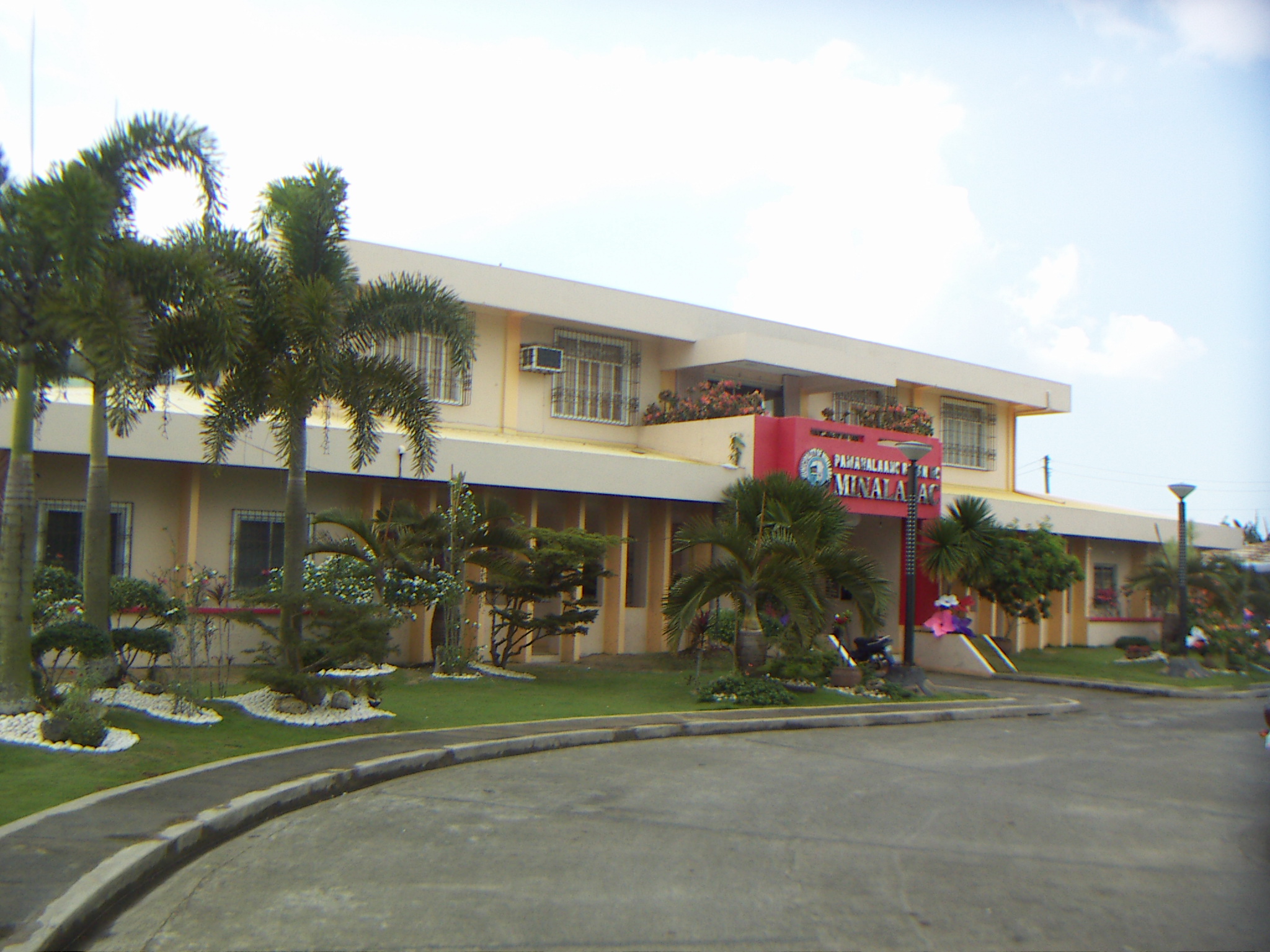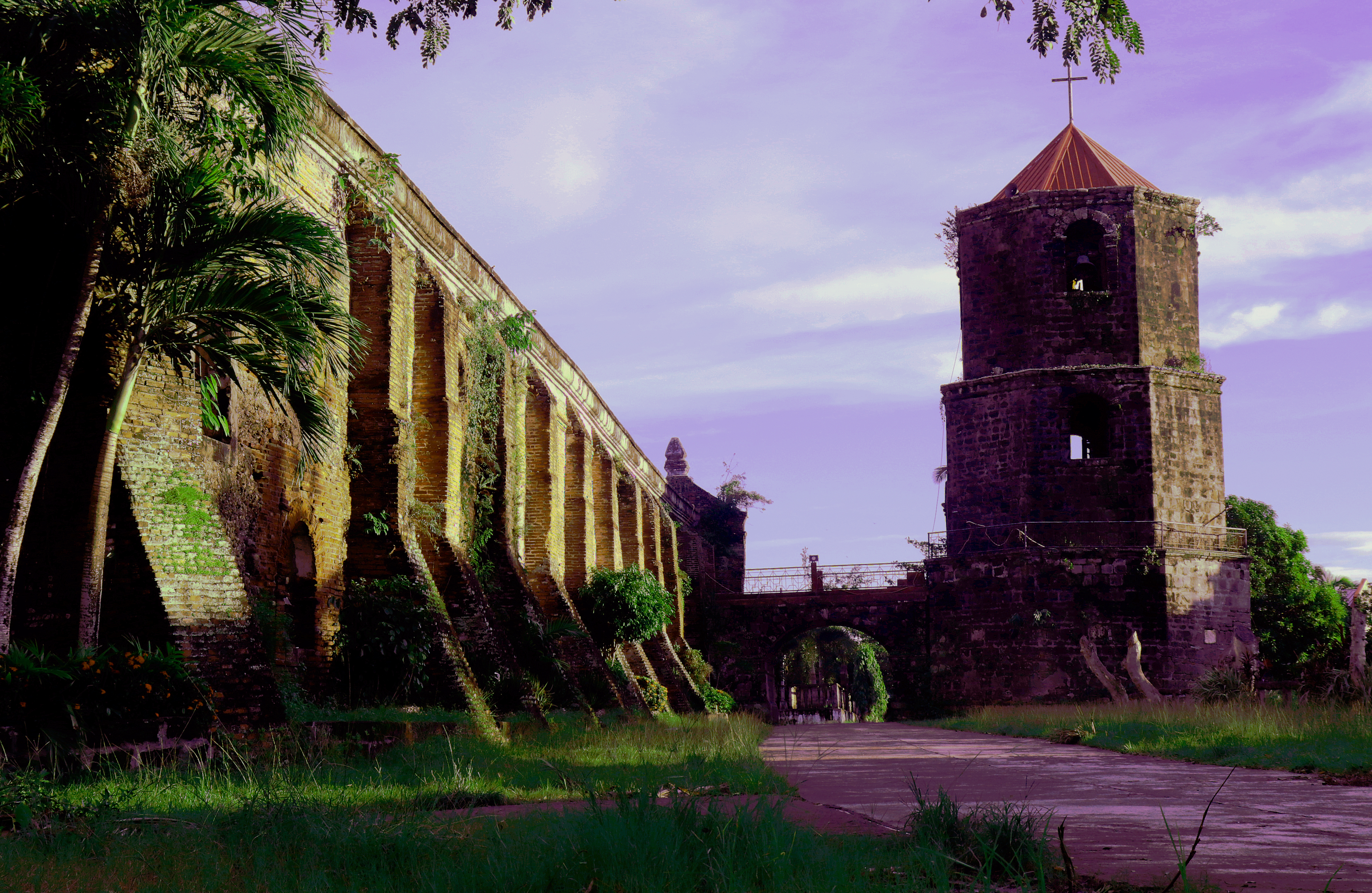|
Metro Naga
Metropolitan Naga was a metropolitan area in the Bicol Region of the Philippines that consisted of the city of Naga and its 14 neighboring municipalities in Camarines Sur. The metropolitan area, which was managed by the Metro Naga Development Council, also included Pili, the capital of the Camarines Sur, and covered most of the 2nd district of the province and part of its 1st, 3rd, 4th and 5th districts. Metro Naga comprised about 40% of the total population of the province, while covering 22.9% of the province in area. In 2017, the National Economic and Development Authority (NEDA) reduced the number of metropolitan areas in the Philippines from 12 to 3. The reclassification removed the metropolitan status of Metro Naga. Naga's surrounding towns which make up the Urban Metro Naga. It composes Magarao, Canaman, Camaligan, Gainza, Milaor. Urban Metro Naga was created on June 11, 2009, by Mayor Jesse Robredo it was to have stronger relationships with other town mayors. It is ... [...More Info...] [...Related Items...] OR: [Wikipedia] [Google] [Baidu] |
List Of Metropolitan Areas In The Philippines
The Philippines has three metropolitan areas, as defined by the National Economic and Development Authority (NEDA). Metro Manila is the largest conurbation or urban agglomeration in the country, and its territory comprises the City of Manila, 15 neighboring cities, and the municipality of Pateros. Metro Davao in Mindanao is the Philippines' second most populous urban area and the country's largest by total land area, while Metro Cebu in the Visayas is the third most populous. The official definition of each area does not necessarily follow the actual extent of continuous urbanization. For example, the built-up area of Metro Manila has long spilled out of its borders into the adjacent provinces of Bulacan, Cavite, Laguna, and Rizal. The number of metropolitan areas in the Philippines was reduced from 12 in 2007 to the current 3 based from the 2017–2022 Philippine Development Plan by NEDA. The other 10 metropolitan areas were: Metro Angeles, Metro Bacolod, Metro Baguio, ... [...More Info...] [...Related Items...] OR: [Wikipedia] [Google] [Baidu] |
Philippine 2020 Census
The Philippines (; fil, Pilipinas, links=no), officially the Republic of the Philippines ( fil, Republika ng Pilipinas, links=no), * bik, Republika kan Filipinas * ceb, Republika sa Pilipinas * cbk, República de Filipinas * hil, Republika sang Filipinas * ibg, Republika nat Filipinas * ilo, Republika ti Filipinas * ivv, Republika nu Filipinas * pam, Republika ning Filipinas * krj, Republika kang Pilipinas * mdh, Republika nu Pilipinas * mrw, Republika a Pilipinas * pag, Republika na Filipinas * xsb, Republika nin Pilipinas * sgd, Republika nan Pilipinas * tgl, Republika ng Pilipinas * tsg, Republika sin Pilipinas * war, Republika han Pilipinas * yka, Republika si Pilipinas In the recognized optional languages of the Philippines: * es, República de las Filipinas * ar, جمهورية الفلبين, Jumhūriyyat al-Filibbīn is an archipelagic country in Southeast Asia. It is situated in the western Pacific Ocean and consists of around 7,641 islands t ... [...More Info...] [...Related Items...] OR: [Wikipedia] [Google] [Baidu] |
Pamplona, Camarines Sur
Pamplona, officially the Municipality of Pamplona ( bcl, Banwaan kan Pamplona; tl, Bayan ng Pamplona), is a 3rd class municipality in the province of Camarines Sur, Philippines. According to the 2020 census, it has a population of 39,333 people. History The beginnings of this town can be traced back from the date it was made a ''visita'' of Milaor. The town of Pamplona was founded in 1817. It first started as a settlement in Western area of the Bicol River, then it grew to become a Sitio called Patong. The name was changed to Pamplona by a retired Spanish military officer who resided in the place and named it after his native city in Spain - Pamplona, capital of Basque, Province of Navarro.Brief History of Pamplona (May 17, 2013) Retrieved from http://www.pamplona.gov.ph/History.html Historical references concluded that most Spaniards inhabiting the place came from the province of Pamplona in Spain and thus decided to name their settlement also as "Pamplona". Pamplona offic ... [...More Info...] [...Related Items...] OR: [Wikipedia] [Google] [Baidu] |
Ocampo, Camarines Sur
Ocampo, officially the Municipality of Ocampo (; Rinconada Bikol: ''Banwāan ka Ocampo''; tgl, Bayan ng Ocampo), is a 1st class municipality in the province of Camarines Sur, Philippines. According to the 2020 census, it has a population of 51,073 people. Ocampo is from Pili and from Manila. History The municipality of Ocampo traced its existence as the former “Mission de Mabatobato” launched by the Franciscan friars in 1735. The place was named “Mabatobato” because of the presence of huge rocks scattered all over the place believed to have erupted from Mt. Isarog. As a mission, it has four barrios; Ayugan, Tinablanan, Pinit and Moriones. In the early 1800s, people from neighboring towns began to flock the area to settle and till the vast areas of lands suited for agriculture. The place began to flourish that the people began to dream of transforming the settlement into a new municipality. Cabeza de Barangay Michael Alcantara and Don Jose Barangbang requested and pl ... [...More Info...] [...Related Items...] OR: [Wikipedia] [Google] [Baidu] |
Minalabac, Camarines Sur
Minalabac, officially the Municipality of Minalabac ( bcl, Banwaan kan Minalabac, tl, Bayan ng Minalabac), is a 2nd class municipality of the Philippines, municipality in the Philippine Province, province of Camarines Sur, Philippines. According to the 2020 census, it has a population of 53,981 people. Geography Barangays Minalabac is politically subdivided into 25 barangays. Climate Demographics In the 2020 census, the population of Minalabac was 53,981 people, with a density of . Economy Minalabac is classified as a 2nd class municipality. Minalabac has the same economy as Libmanan, Cabusao, San Fernando, Milaor, Ocampo, Nabua, and Calabanga because of fishing in coastal barangays near Ragay Gulf particularly Salingogon, and Bagolatao. Minalabac has several beach resorts that also boosts the economy of the town. Majority of the land is devoted to rice, vegetables and other root crops. Transportation Buses are used for transportation from Naga City to Minalabac, ... [...More Info...] [...Related Items...] OR: [Wikipedia] [Google] [Baidu] |
Milaor, Camarines Sur
Milaor, officially the Municipality of Milaor ( bcl, Banwaan kan Milaor; tl, Bayan ng Milaor), is a 3rd class municipality in the province of Camarines Sur, Philippines. According to the 2020 census, it has a population of 33,963 people. Milaor is part of the Metro Naga Urban Area. It is from Pili and from Manila. History The work of evangelization in Milaor began in 1579 when the Franciscan missionaries came to the Philippines upon the order of Pope Sixtus V and King Philip II, and given specific assignment to work in Bicol Region. In 1585, Milaor was declared a parish under the titular patron, Saint Joseph. The first parish administrator was Fray Matias de Andrade, OFM., who arrived in Bikol in 1582 and later became the fifth Bishop of the Diocese of Nueva Caceres. The Franciscans, Fray Juan del Sacramento and Fray Jose dela Virgen, initiated the construction of a church made of bricks and stones. This was built in a place known today as "Sinimbahanan" now a part ... [...More Info...] [...Related Items...] OR: [Wikipedia] [Google] [Baidu] |
Magarao, Camarines Sur
Magarao, officially the Municipality of Magarao ( bcl, Banwaan kan Magarao; tl, Bayan ng Magarao), is a 3rd class municipality in the province of Camarines Sur, Philippines. According to the 2020 census, it has a population of 26,742 people. Magarao is part of the Metro Naga Urban Area. History Magarao derived its name from a species of thorny wild bush locally known as ''garao-garao'', which abundantly grows in the area. This type of plant no longer exists today as it was believed that the inhabitants of Magarao hindered its growth and propagation because of its thorny appearance. It was a group of missionaries from the Order of Friars Minor who founded the town in 1570, although missionary work continued only in the year 1690. How Magarao became a municipality Magarao was first founded in 1570 and was named Garaoon from 1570 until 1800 when it was renamed Magarao. In 1802 the municipality was absorbed by Quipayo and was downgraded into a "visita. Calabangueños, Bombon ... [...More Info...] [...Related Items...] OR: [Wikipedia] [Google] [Baidu] |
Gainza, Camarines Sur
Gainza, officially the Municipality of Gainza ( bcl, Banwaan kan Gainza; tl, Bayan ng Gainza), is a 4th class municipality in the province of Camarines Sur, Philippines. According to the 2020 census, it has a population of 11,584 people. Gainza is one of the oldest municipalities in Camarines Sur. Gainza is a part of Metro Naga Urban Area History The town is not a young municipality neither it can be counted among the ancient towns and cities in the Bicol Region. However, its origin is as old as “Ciudad de Caceres” – Naga City today. The municipality was formerly a barrio of Ciudad de Cacares founded by Captain Pedro de Chavez. The barrio of Ciudad de Caceres was called Sto. Domingo, after its patron saint, Sto. Domingo de Guzman. Because the natives of this farming and fishing village had progressively clung to the fertile lowland soil and fish- rich meandering rivers and creeks in the central part of the province, its people earned the benevolence and recognition ... [...More Info...] [...Related Items...] OR: [Wikipedia] [Google] [Baidu] |
Canaman, Camarines Sur
Canaman, officially the Municipality of Canaman ( bcl, Banwaan kan Canaman; tl, Bayan ng Canaman) is a 3rd class municipality in the province of Camarines Sur, Philippines. According to the 2020 census, it has a population of 36,205 people. Canaman is known for its upscale shopping, heritage which dates back to Spanish era, and its new first class housings. Canaman is part of the Metro Naga Urban Area. Etymology The area that is now Canaman used to very thickly forested. According to Fr. Frank Lynch, S.J., who said that Canaman is the purest among Bicol dialects: “The name Canaman is locally said to be derived from the root ''kana'', meaning "building materials". The suffix -''man'' is taken as a locative, the name thus indicating “place where there are building materials”. History Spanish colonization in Canaman began around the 1580s when some Nueva Caceres-based missionaries apparently on their way back from gospel work in either the visita of Quipayo (now Calabanga) ... [...More Info...] [...Related Items...] OR: [Wikipedia] [Google] [Baidu] |
Camaligan, Camarines Sur
+ ''an'' ("place of sheds") , motto = , anthem = ' , subdivision_type3 = District , subdivision_name3 = , established_title = Founded , established_date = 500 AD , parts_type = Barangays , parts_style = para , p1 = (see Barangays) , leader_title = , leader_name = Diano S. Ibardaloza, Jr. ( PDPLBN)"Halalan 2022 CAMALIGAN, CAMARINES SUR Results" ''ABS-CBN''. 1 July 2022. Retrieved July 1, 2022. , leader_title1 = , leader_name1 = Josefina N. Asor ( [...More Info...] [...Related Items...] OR: [Wikipedia] [Google] [Baidu] |
Calabanga, Camarines Sur
Calabanga, officially the Municipality of Calabanga ( bcl, Banwaan kan Calabanga; tl, Bayan ng Calabanga), is a 1st class municipality in the province of Camarines Sur, Philippines. According to the 2020 census, it has a population of 88,906 people. It has a land area of , which constitutes 3.1% of the Camarines Sur's land area. History In 1578 when the head Mission of Quipayo was established, Calabanga was only a visita or barrio. At that time, the place had vast forests and swamps and an abundance of wildlife such as monkeys, wild chickens, and forest lizard. Others say, it derived its name from the Bicol word “Calabangan”, the plural term of “labang” or “litag”, meaning a kind of snare for catching wild animals. Another legend says that Calabanga originated from the word “Calagbangan” meaning the wide, long, and straight street spanning from the church through the poblacion, east to west, called locally as “calabaan” or “calacbangan”. Calabanga becam ... [...More Info...] [...Related Items...] OR: [Wikipedia] [Google] [Baidu] |
Bula, Camarines Sur
Bula, officially the Municipality of Bula (Rinconada Bikol: ''Banwaān ka Bula''; Tagalog: ''Bayan ng Bula''), is a 1st class municipality in the province of Camarines Sur, Philippines. According to the 2020 census, it has a population of 73,143 people. History The town of Bula is historically considered as one of the first four mission towns of Camarines Sur founded by the Spanish conquistadores when they set foot on the Bicol soil coming from the Visayas in 1576. The other premier towns were Naga, Quipayo and Nabua. The Spaniards who first came to this place asked the men who were splitting bamboos about the name of the place, and since they did not understand the language, they thought that they were being asked about the name of the bamboo, and so they got the answer "Bu-la". And so Bula became the name of the town. However, it was only in 1578 when the natives where Christianized, so the National Historical Commission dates back the town's history to 1578. From this, the to ... [...More Info...] [...Related Items...] OR: [Wikipedia] [Google] [Baidu] |





